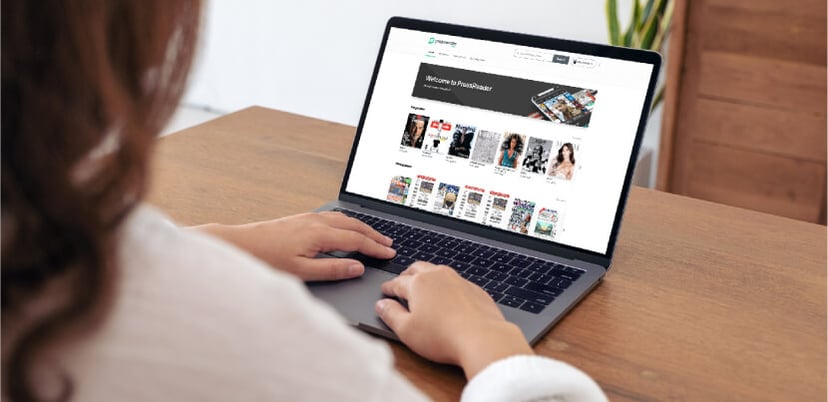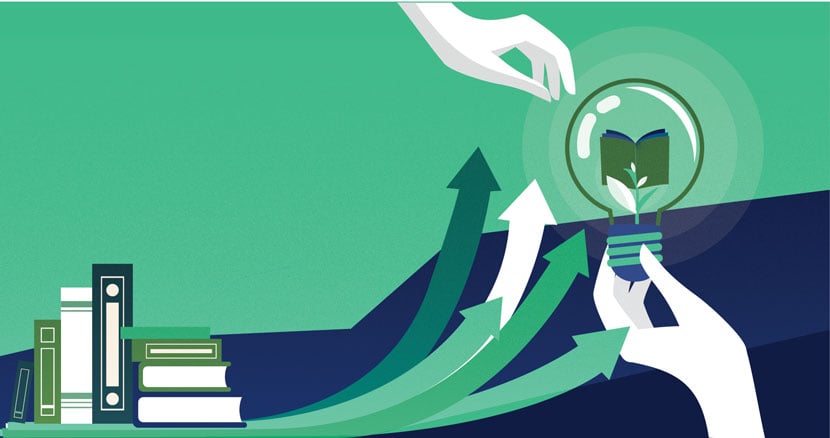At first glance, publishers and digital newsstands might seem like natural rivals. Publishers have built a business on monetizing individual readers (with the help of great journalism).
Digital newsstands, on the other hand, are designed to be an unlimited-access pass to anyone with a subscription, opening up the floodgates to provide users with articles and other media content from anywhere in the world.
But this rivalry is false. Services like PressReader are a platform for publishers: a business opportunity, not a threat. By offering newspapers, magazines and other resources via an online platform, a publisher can reach a new audience of international readers, promote individual subscriptions, have a presence in new markets and more.
And for libraries, which recognize the value of quality content and supporting the publishing industry, digital newsstands like PressReader can be a powerful tool to promote media literacy and content diversity in their communities.
That’s right: publishers, libraries and PressReader might actually be the perfect trio of friends. Here’s why.
See also:
-
Five reasons why the libraries we work with love PressReader
-
Three PressReader features that help users keep up with news that matters to them
1. Getting publications into traditionally hard-to-reach spaces
As pleasurable as it is to flip open a fresh magazine or pore over a hard copy of the paper with a cup of coffee, the reality is, there are limitations when it comes to the business of distributing physical print products.
These may be financial, these may be logistical — the bottom line is that every publication can’t be accessible to everyone whenever and wherever they want it.
Public libraries might buy one copy of a regional newspaper for one branch, but not invest heavily in local content from a different region, or make it available at every branch. And chances are, individual readers aren’t going to subscribe to their hometown newspaper if they’re living out of town.
With PressReader, though, smaller papers and out-of-region publications can be made instantly available to everyone with a library card. Travelers can get their local news on the go — The National Post, for example, can be just as conveniently accessed in a public library in downtown Vancouver or Hong Kong. Remote access and offline-reading options make newspapers and magazines available from anywhere readers' devices go.
In support of homegrown publishing
PressReader is especially passionate about including niche and community newspapers and magazines. We’re rooting for homegrown content and local publications, and we’re pushing to share their stories with global audiences, because we believe these independent and regional voices matter.
For libraries, the inclusion of local publishers on PressReader is essential, too. Librarians are continuously striving to improve their services and curate a diverse publication list that keeps their patrons informed of the local news stories and current events that matter most to them. With the PressReader app, librarian and reader alike can browse a collection of the world's top-tier titles, small news outlets and everything in between.
Creating an audience beyond borders
Without physical limitations, a publisher can still reach its audience out of region, and can potentially connect with a new readership in the process.
At the same time, the library benefits from the ability to tap into a wealth of global perspective and provide patrons with local newspapers and magazines from more than 120 countries around the world.
2. Providing access to new audiences

There’s no doubt that the pandemic impacted publishers. Between the halt of physical deliveries, newsstands and bookstores shuttering and loss of advertising revenue, many publishers saw a severe decline in circulation. It’s no wonder publishing companies may be wary about any additional perceived threats to their subscription base.
But in reality, it’s not an either/or situation: readers can continue subscribing directly for their print copies and then also sign into their PressReader account for additional access. In fact, people who read publications through public libraries aren’t the same people who subscribe themselves. It’s an entirely different demographic, made up of people who don’t want to pay for these titles themselves, or who think the government should make content available for free.
PressReader adds value for advertisers
In other words: PressReader isn’t competing directly with the publisher for a library patron’s subscription — rather, we aim to help them expand their reach and connect with audiences they may not have ever tapped into in the first place.
Patrons who read a digital edition of a newspaper on the app see everything that’s in the print edition — ads included — and PressReader consumption can be counted towards audited circulation in most countries around the world. That means the electronic edition helps make the print edition even more valuable to advertisers.
3. Offering a superior reading experience

PressReader's technology offers a superior user experience at the software level, with digital replicas and intelligent text-views of content. But being able to create an enjoyable reading experience online isn’t just a matter of pride: it’s a way of restoring trust.
Troublingly, over the past years, media literacy has been on the decline, in conjunction with a rise in the distrust in “mainstream” news. Libraries play an important role in helping patrons of all ages determine what information is trustworthy and what is not, but they can’t do that without the help of publishing companies and user-friendly platforms.
Meeting omnichannel demand
If readers have access to enjoyable, easy-to-use reading tools like PressReader, they’re more likely to search for and access trusted journalism from diverse and reputable sources.
Part of providing a good user experience for an audience is offering the same publication access across channels. Digitally savvy library patrons expect the entire collection of newspapers and magazines available to them in the branch to be accessible through a library’s technology platforms, and PressReader is a chance for our publishing partners to easily accommodate this omnichannel demand.
For library staff, the accessibility features of the PressReader app make this improved reading experience available to even more patrons.
4. Supporting quality content

There are enough questionable content producers and news aggregators out there on the web to understandably make both librarians and publishing firms nervous. But a successful platform for publishers is one that respects and honors that important work that they and their journalists do.
PressReader will always prioritize protecting the publishers’ own revenue streams, because it’s at the core of PressReader’s mission to support high-quality journalism (which, in turn, supports media literacy and a strong democracy — key goals of librarians everywhere).
Ultimately, PressReader’s focus is to allow partners, like libraries, to offer an enhanced experience to users through an additional channel. It’s a supplement, not a replacement. There’s no rivalry here: just a beautiful partnership in support of journalism, truth and content that matters.
Learn more about PressReader for libraries here, and click here to discover how we help our publishing partners reach new audiences around the world.









